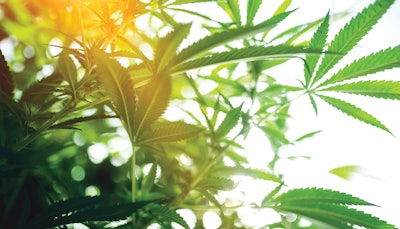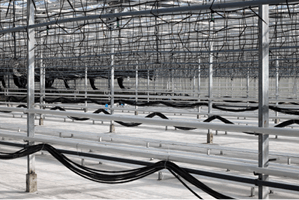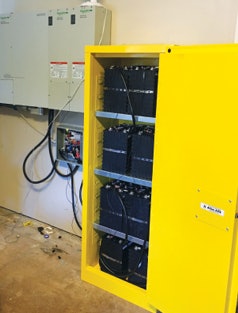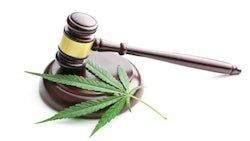
In addition to labor costs and overhead, the cost of energy in the form of fuel, natural gas or electricity will be a large expenditure for a cannabis production facility. Recognizing that fact and planning for it can be a strategic advantage to your bottom line. There are many choices to make, and decisions will have far-reaching effects regarding eco-friendly, large-scale cannabis agriculture. It’s not big news that outdoor and greenhouse cultivation, in general, are two of the most obvious ways to save on energy costs over indoor cultivation—by utilizing only or mostly the sun for lighting—but there are a number of other considerations that apply, regardless of the facility type in which you are growing.
Lighting: Advancing Technology
For starters, the lighting industry catering to cannabis production is just now catching up with technology, but as cannabis legalization spreads, the incentive to create superior growing technologies increases.
Many lighting choices are currently available—from single- and double-ended 1,000W metal and sodium halide lights to high intensity discharge (HID) lights, LEDs and convection lights—many with dimmable and spectrum-adjustable capabilities. But I suspect that as cannabis legalization expands and companies can specifically study both indoor and greenhouse lighting requirements for cannabis, they will be able to further tailor industry-specific products to grow cannabis to its fullest potential at the lowest energy cost. (Better yet would be to have large bodies of true scientific research regarding lighting’s impact on cannabis plant growth and composition.)
Heating, Cooling and Storing
How to heat and cool the growth environment is also a major consideration. Think outside the box whenever possible, and investigate all realistic options and emerging technologies such as geothermal heating, which utilizes heat from the earth’s core to circulate throughout a greenhouse; or utilizing steam from geothermal activity to produce electricity as the Calpine electric company does. Wind turbines are not a real option, as you would need a very big wind turbine, and greenhouses are not typically built in excessively windy areas.
For those using traditional power sources, you can at least explore options in costs. In California, for example, Pacific Gas and Electric (PG&E) recently proactively announced that it will be offering existing agricultural power rates to licensed cannabis producers. (See the Guest Column, “(Sustainable) Power to the People,” for more information on reducing power costs.)
But what happens in the case of an interruption in electrical service? The question leads to the subject of backup power generators, which typically run on natural gas or diesel fuel. Obviously natural gas is the logical option. But not all natural gas generators are created equal. Houweling’s tomato greenhouse in Camarillo, Calif., is the first in the United States to use a General Electric Jenbacher J624 two-stage turbocharged natural gas engine with a GE-designed CO2 fertigation system. The generator provides heat, power and CO2 to Houweling’s 12.5-acre greenhouse. The 13.2-megawatt (MW) heat and power co-generation technology captures traditionally wasted heat, water and CO2 for use within the greenhouse. This technology far exceeds the company’s power needs, according to the company’s website, allowing them to supply electricity to the grid.
Another interesting option is energy storage systems, i.e., large-capacity lithium batteries. Atlas Energy Storage Systems (atlas-ess.com) provides electricity on demand, which can be charged from the grid during off-peak demand hours to be utilized during peak demand hours, if desired. The batteries can be charged by solar collectors as well.
How you use your electrical power is also very important. For example, I have yet to see data that proves it is beneficial or fiscally responsible to have all the lights in a given environment turn on at exactly the same time. Since energy companies charge users for the highest 15-minute interval of energy usage during the billing cycle, turning all the lights on at once will cause that highest interval to jump significantly. So, at least in terms of avoiding higher costs and cutting some usage, it is better to progressively increase light intensity by the hour to simulate sunrise, with maximum intensity at artificial "noon." Automatic controllers are available now to do just that.
While the energy-usage-and-cost rationale is evident, however, I would love to see published scientific data showing the advantages and disadvantages, specifically on cannabis plants, of mimicking natural light intensity throughout the day compared to standard practices.
Water-Wise

Efficiency regarding water conservation, recovery, sterilization and delivery are paramount. Wasting valuable water is not responsible nor sustainable. You must strategically utilize and manage water usage.
In addition to products that enable you to reclaim, filter and reuse water, products designed to conserve water during delivery also are emerging. For example, Cube Cap (cubecap.ca) offers a product named the DripCap, which serves two purposes. First, it prevents light from reaching the top of rockwool cubes, which inhibits algae growth. Secondly, it provides four water-delivery points from one dripper at each corner of the cube, which also minimizes the cube’s saturation time while still achieving desired levels of runoff. Because there are four points of water distribution, and saturation is achieved sooner, the water applied is minimized. The key to efficient use of the DripCaps is proper water-pressure regulation.
Cultivating a Sustainable Industry
In addition to all the obvious major expenses mentioned above, details and small expenses may accumulate rapidly. And the choices you make also have far-reaching effects.
For the most part, the cannabis industry still controls the cannabis industry; outside regulation (e.g., regarding water and electricity usage) has not yet become the mainstay. For this trend to continue, the industry must support itself by supporting companies that continue to innovate and develop quality products that help cultivators lessen both costs and environmental impacts.
Consider buying recycled products, such as plastic pots and irrigation lines, whenever possible. Encourage manufacturers you work with to offer recycled material options. As consumers of cannabis technologies and equipment, cultivators can drive our industry more sustainably into the next generation by strategically choosing to operate efficiently and in eco-friendly ways, without any compromise or sacrifice of quality. By rewarding innovative companies by purchasing their products and supporting their businesses, you encourage further innovation.
Waste Not, Want Not

The discussion of the industry’s autonomy leads to the issue of dealing with waste byproducts, such as vegetative waste from both cultivation and processing at large-scale production facilities—indoor, outdoor or greenhouses. As the industry becomes legitimized, policymakers will ultimately encourage sustainable practices and begin to allow reuse and repurposing of all production materials. (Currently in Colorado, for example, cultivators can reuse their soil, but it can’t be reused outside of the cultivation operation; it must be destroyed, by law.)
Once the laws evolve, soil can be sterilized for reuse if desired, and waste vegetation can be pelletized and used in furnaces for heat or power generation. Stalks and branches can be utilized by other companies to manufacture products ranging from fiber to plywood and bricks.
At one point in time, a recycling company in Arizona existed solely by monetizing the waste of the largest greenhouse operation in America (covering 318 acres). All materials and waste from the greenhouses were recycled and monetized in one form or another. All vegetative waste was composted and sold as soil amendment. Any plastic greenhouse covering that had exceeded its lifespan was recycled, and all used plastic pots, trays and irrigation materials, even drippers, were recycled.
Therefore, I suspect there is a significant profit in repurposing and recycling waste materials from commercial cannabis production. Simple choices also should be considered, such as whether it is more efficient to clean and sterilize every pot for re-use, times 20,000, or to use biodegradable pots and start anew with each cycle. Consider all ways to eliminate or minimize waste.
The True Cost of Shipping
Another aspect to consider regarding your sustainability efforts is the cost of shipping goods and supplies. I understand the desire to live and operate in a beautiful, remote location, but costs are associated with that decision. Consider the increased carbon footprint of shipping supplies to, and the finished products from, an idyllic mountaintop.
What are the associated costs and environmental impacts of using diesel fuel to truck supplies to remote locations? How does that associated cost affect your cost of production versus your competitor’s? Such costs likely would be difficult to justify if your competitor’s cost of production is dramatically lower than yours. And it is, perhaps, even more difficult to appear to be an environmentally conscious steward if you knowingly utilize tens of thousands of gallons of diesel fuel trucking materials to and from nirvana unnecessarily, polluting the air while doing so.
Again, every decision you make may have wider implications than you realize. Making sustainability a priority can not only help make your business more environmentally friendly, but it can help move the industry forward in a more sustainable direction, and certainly not least of all, it can help your business save on resources and costs for a healthier bottom line.























